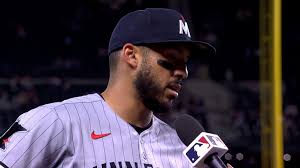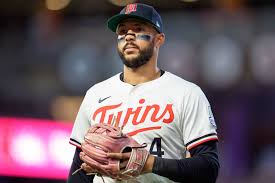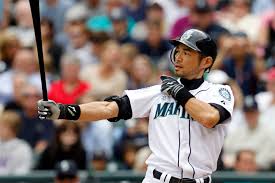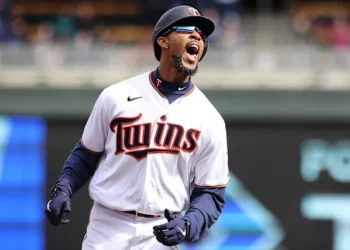/cdn.vox-cdn.com/uploads/chorus_image/image/69949040/1343972527.0.jpg)
Perhaps no player in baseball has been a greater focus of rumors leading up to next week’s trade deadline than Garrett Crochet.
But are the Chicago White Sox really going to wind up trading their All-Star ace?
It’s not that they won’t. Chris Getz’s front office has seemed open to anything and everything, including deals that would send controllable stars in the making like Crochet and Luis Robert Jr. – under club control for the next two and three seasons, respectively, after this one – out of town. All that in an effort to boost Getz’s long-term rebuilding project by injecting talent into the farm system.
But Crochet, as he seems to be in just about everything, is a unique case.
White Sox fans are well aware of his story by now and what that story means for his future. He made the transition from the bullpen to the starting rotation in the spring, on the back of basically two straight seasons missed with injuries and a career total of 73 big league innings, all of them in relief. And he did it marvelously. He’s been, if you’re an fWAR fan, the most valuable pitcher in baseball, dominating as he answered every question about whether he was capable of jumping to a starter’s role and a starter’s workload.
But that workload is currently under the microscope more than it ever has been previously. The White Sox foreshadowed that they’d be “dwindling” his innings as the summer wore on, and that’s already materialized. After racking up 101.1 innings by the end of June, his July has looked starkly different. He pitched four innings against the Marlins, two innings against the Pirates, one inning in the All-Star Game and four innings against the Rangers on Tuesday night.
Crochet, of course, could be a unique specimen, as he’s proven to be to this point. Letting him go and watching his innings race up to 200 without any guardrails might not be the best strategy for a guy who only just turned 25 years old. But the White Sox have watched him pass every test to this point, without much in the way of physical effects, and it’s possible he’s just built differently, the rare pitcher who can do what others cannot.

“He’s such a workhorse of a pitcher,” White Sox pitching czar Brian Bannister said during a Tuesday media session. “He’s massive. His force production is outstanding. He has the mass of a Paul Skenes, that type of a big pitcher. So I’m not as concerned about his durability. But what I like is the ability for him to be more efficient in his innings because of that cutter. I think it smooths out the quality of his innings, and it just allows him to take a little workload off his stuff where he’s not throwing a ton of 25-, 30-pitch innings but he’s able to get through some clean innings and keep his overall volume down and recovery up.
“I do think true workhorse pitchers who have the frame Crochet has are able to throw more pitches consistently and do it for a longer period of time. I really think the key is allowing him to have an arsenal that goes out and gets outs efficiently. I’m not as big on strategic de-loads or really reducing pitch counts. I look more at: How hard does a pitcher have to work to get through his outings? And I think the way he’s pitching and the efficiency of it gives them a little more leeway.
“We have some creative strategies we are going to employ in the year-end to preserve him, given it’s going to be a big jump in workload. But overall, I’m very bullish on him for the future and what he will be able to do from a volume perspective.”
Now, though, the questions about what the rest of Crochet’s 2024 looks like are smashing up against the questions about how much Getz can net in a trade. Because of the questions surrounding the big lefty’s workload, it’s worth wondering if Getz will be able to find a trade partner that values Crochet as much as the White Sox do.
They’ve seen Crochet make the jump and become an elite starting pitcher, and they certainly know where he’d be if they were in a different position, capable of contending for a division title and more: right at the top of their rotation. Asking for a massive return for the guy who has arguably been baseball’s best pitcher is plenty reasonable.
But will other teams, especially those paying prospect capital to win a World Series this year, feel the same?
Crochet’s talent and what he’s done is obvious. But if the White Sox are already hitting the brakes hard enough to keep Crochet from eclipsing 80 pitches in his first start of the second half, will a team acquiring him be able to count on him to make starts deep into October? And if they can’t, aren’t they only getting him to serve a different role, perhaps as a bullpen arm? Is a bullpen arm – albeit a really, really good one who you can put at the front of your rotation in the two years that follow – worth the prospect haul Getz is surely looking for?
It’s why, despite national reporters continuing to focus on Crochet as the best starting pitcher in a market apparently short on teams with something to sell, it’s worth wondering about the likelihood of a deal over the next week.
The White Sox will be fine if they don’t trade Crochet this summer, of course, and all that control means they can cash in on him this offseason or during next season, if they are still of the opinion that they’re best served dealing a guy with a seemingly long future as a No. 1 starter in the sport. Getz’s rebuild hasn’t come with an estimated contention date, though a willingness to trade guys like Crochet and Robert signal it could be years away, after the control that makes them attractive targets for other teams has expired. They present opportunities, then, for Getz to acquire talent – and potentially a large quantity of it – that could contribute to the next contending White Sox team, even if that is years down the road.
By the offseason, perhaps, Crochet will have proven even more and made it through the White Sox’ plan to manage his workload over the final two-plus months of this season. He can be acquired as an obvious top-of-the-rotation starting pitcher, rather than a question mark of sorts who would need a role reversal or severe limitation in order to get him to the end of a playoff run in 2024.
Of course, the deadline is when desperation strikes, and teams looking to make an avalanche of offseason spending worth it (the Dodgers) or to avenge a rare year without a playoff appearance (the Yankees) could find themselves well motivated to cough up exactly what Getz wants if it means a boost to their pitching staff. Crochet is the best arm available, after all, and likely coveted by plenty.
But Getz holds the cards, and unless there’s a team out there ready to match a steep ante, he’ll continue to do so.











Discussion about this post